Survey of marine ecosystems along the northwest coast of Greenland(Observation of fish and zooplankton appearance by using moored Acoustic Zooplankton Fish Profiler)
Overseas Fellowship Program Participant:FY2023 First Call Short-Term Program
Kaisei Sakurai (Hokkaido University)
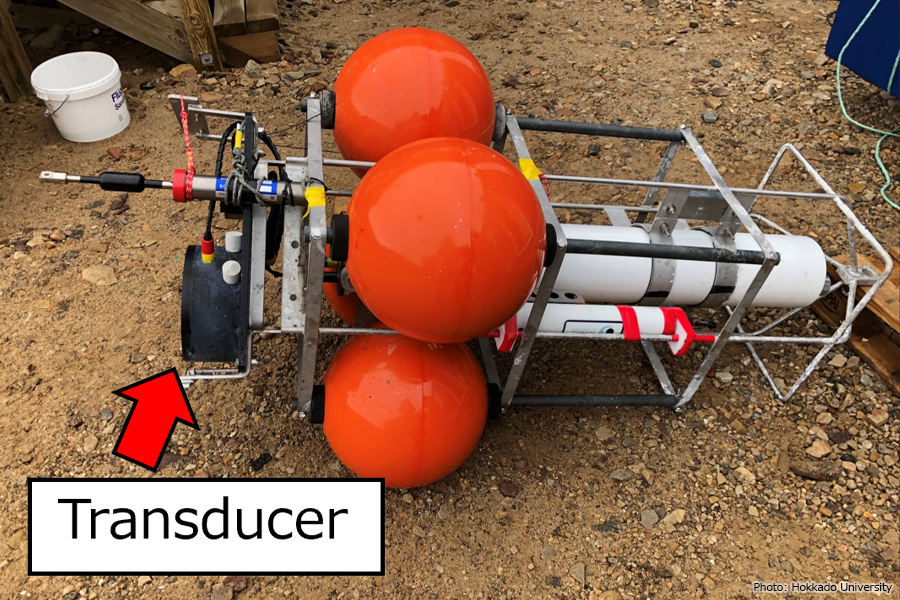
I have been observing zooplankton and fish abundance by using Acoustic Zooplankton Fish Profiler (AZFP), which is like a moored fish finder in Hokkaido (Fig. 1). However, this program gave me an opportunity to conduct my research that is using AZFP in Bowdoin Fjord, northwest Greenland. In this dispatch, I traveled to the research site to set up, install, and retrieve the profiler by myself.
In Bodwin Fjord, it is known that glacial melt water affects the abundance of fish and zooplankton in the ocean. Fish and plankton in the fjord are also important prey for seabirds and marine mammals. Therefore, in my master’s research, I would like to monitor when and how much zooplankton and fish appear in the fjord by installing acoustic profilers at the glacier terminus of the fjord.
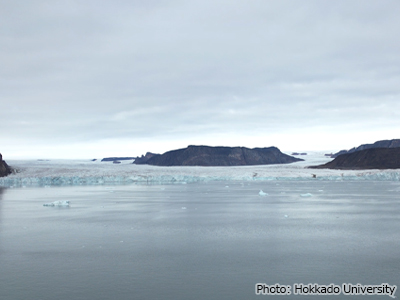
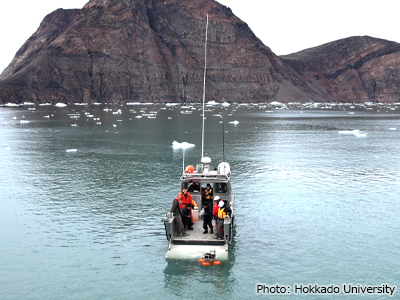
AZFP had already been installed at the bottom of glacier terminus in Bodwin Fjord in August 2022 and had been observing for a year. In this dispatch, we retrieved this profiler to take back the data and perform maintenance, and then installed it again (Fig. 3).
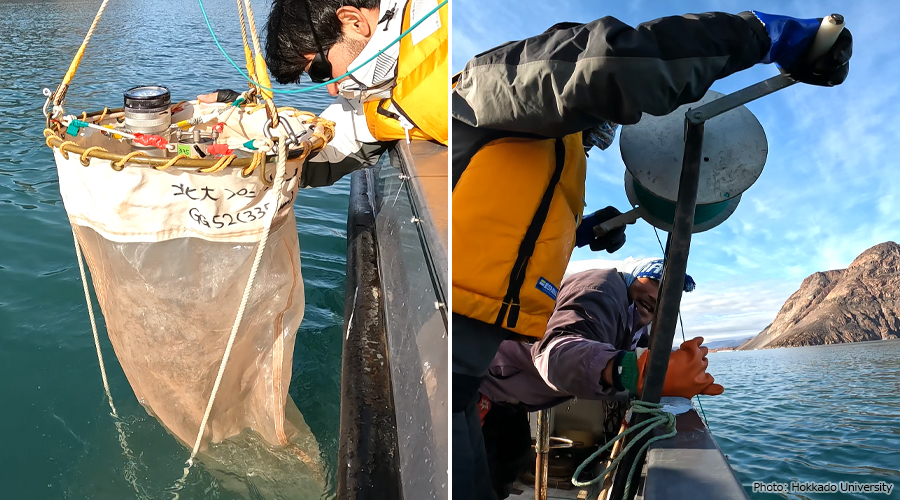
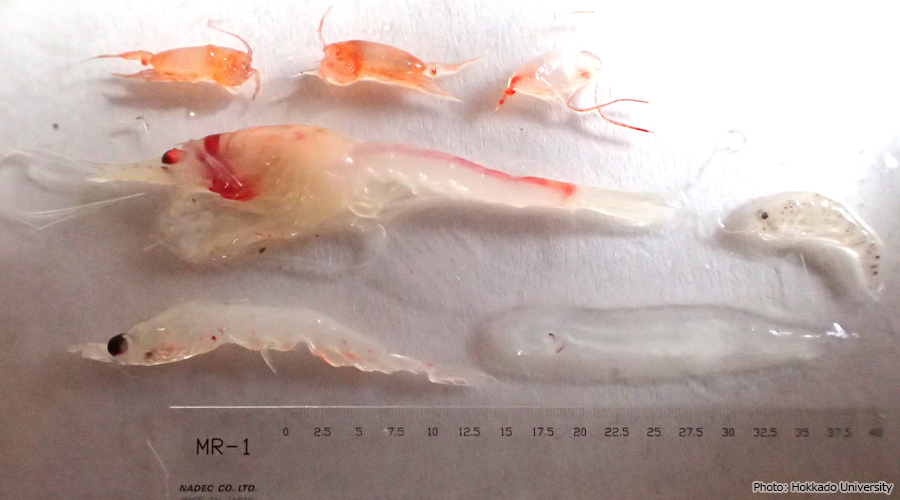
I also sampled zooplankton using a plankton net to see what kind of organisms live in Bodwin Fjord and can be observed with AZFP (Fig. 4). As a result of sampling, I was able to collect zooplankton such as mysids, krill, and copepods (Fig. 5).
Furthermore, an echogram was output from the acoustic data collected to confirm the undersea conditions. An echogram is a color representation of the intensity of sound reflected from underwater objects and organisms (Fig. 6). The vertical axis represents depth, the horizontal axis represents time, and the color bars represent the intensity of the reflected sound. From the echograms, we were able to confirm the reactions of sea ice and organisms. We were also able to confirm seasonal changes in the response of organisms, with more in summer and less in winter. According to a local fisherman, shrimp inhabit Bodwin Fjord during the summer season, so this response may reflect shrimp and other organisms in addition to plankton-netted zooplankton.
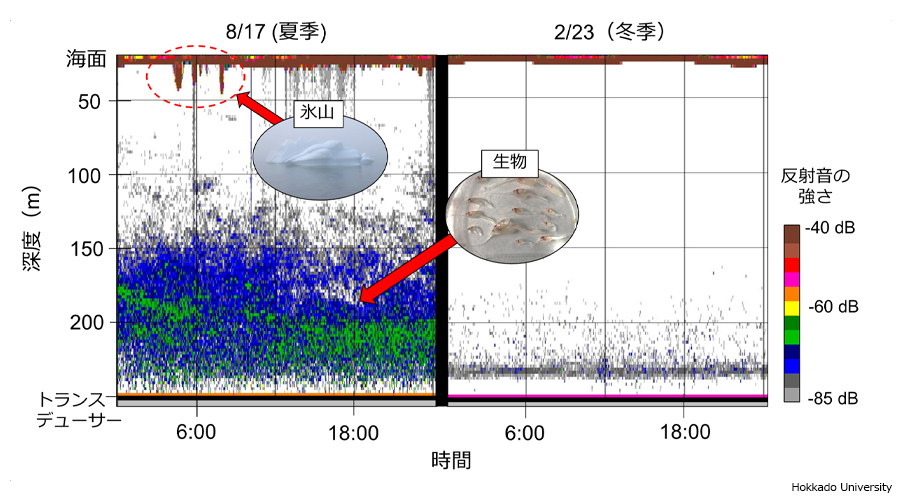
In the future, we plan to investigate the effects of sea ice and glacier melt on living organisms by synchronizing acoustic data with the timing of sea ice movement and upwelling of glacier melt water (plume). The moored AZFP will be recovered again next August.
I would like to thank everyone that helped my investigation.
